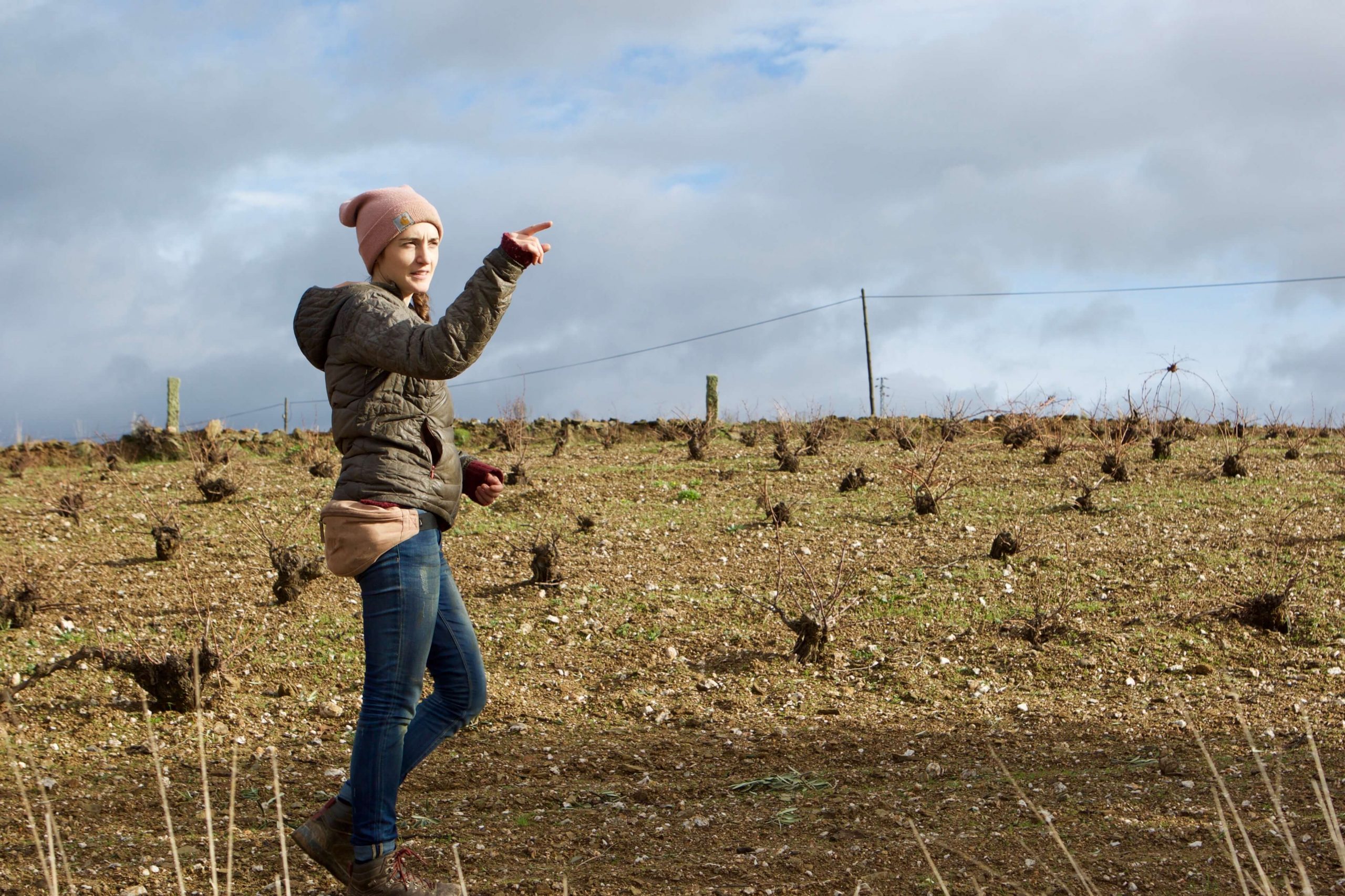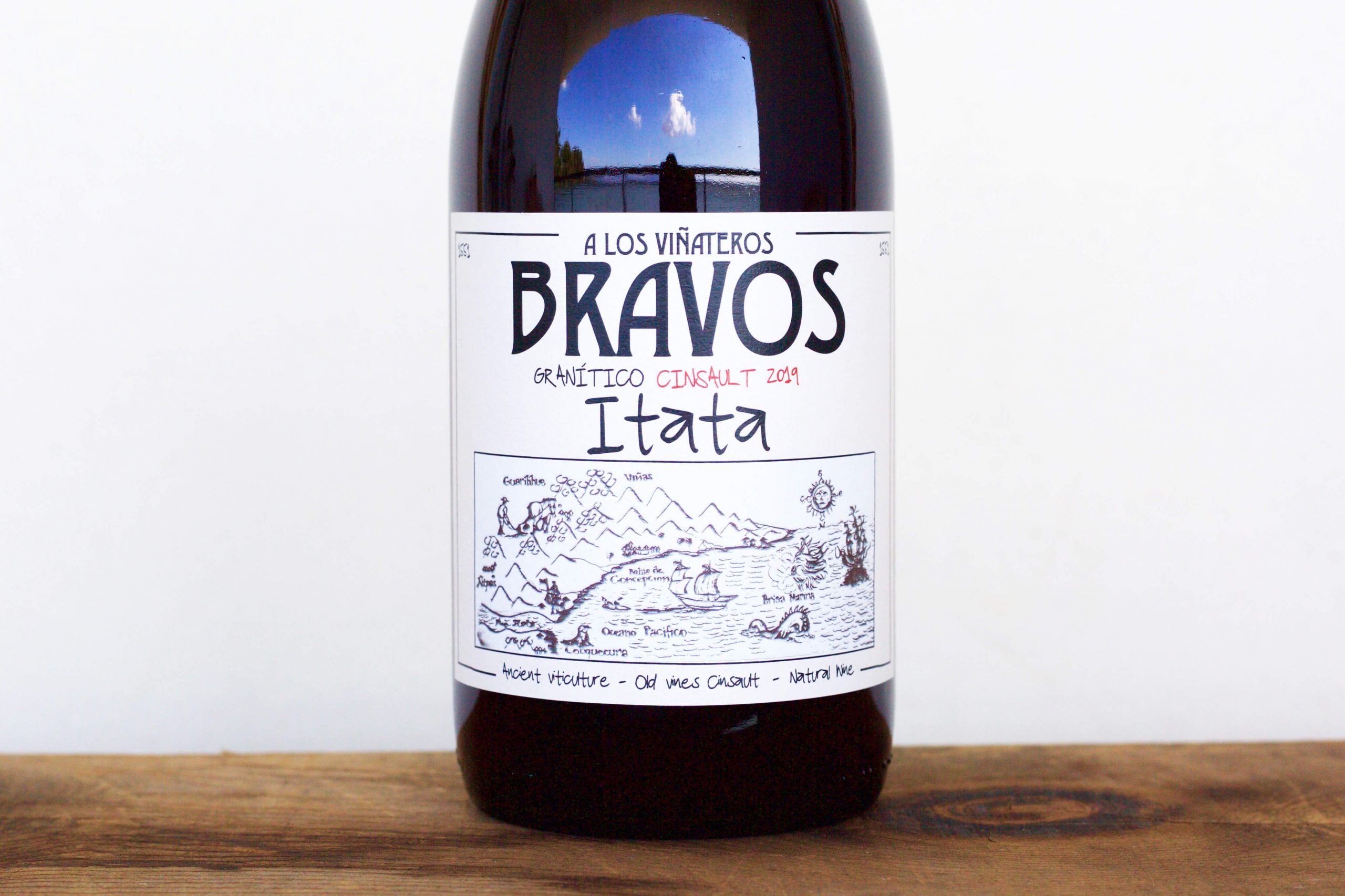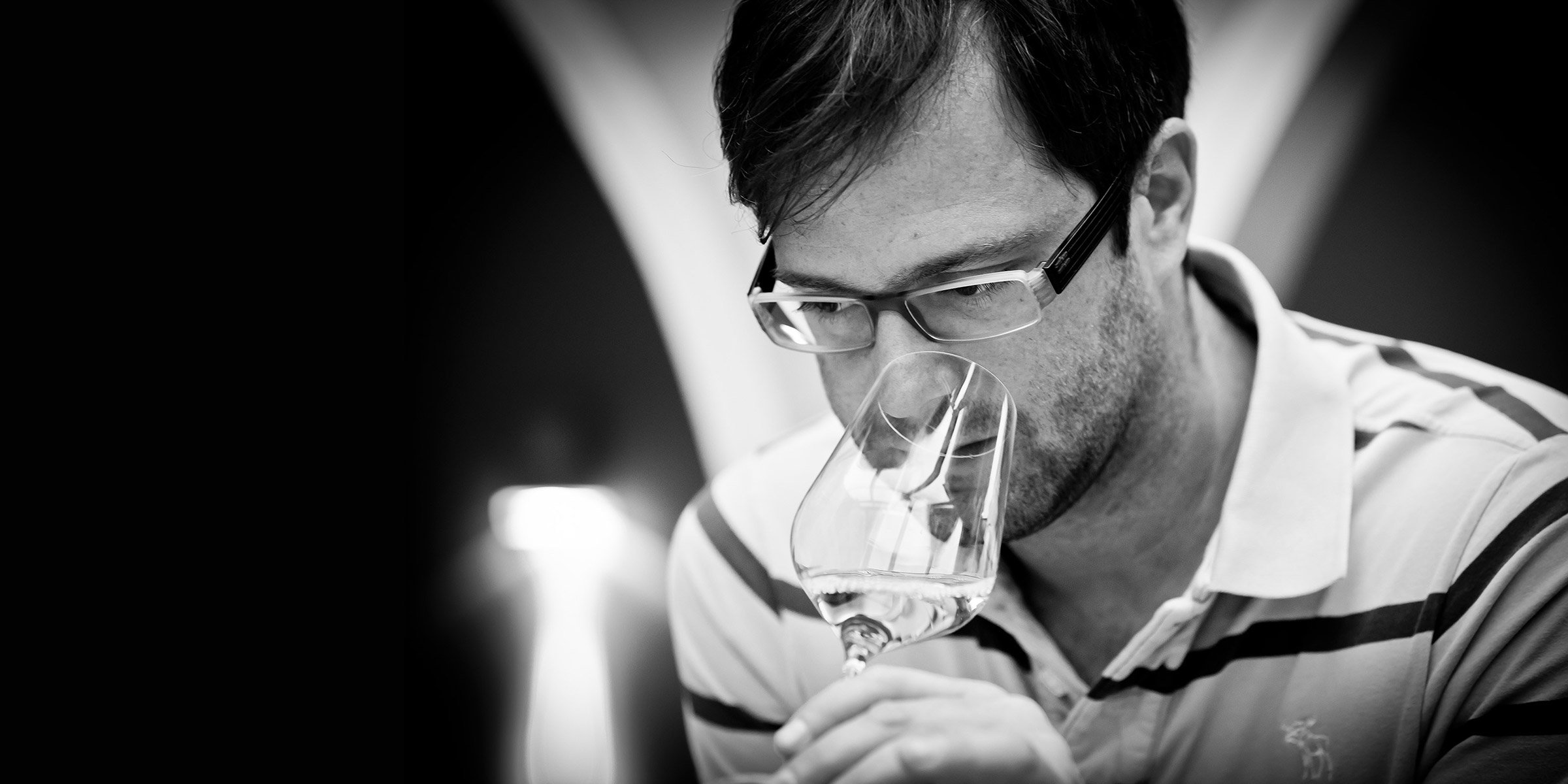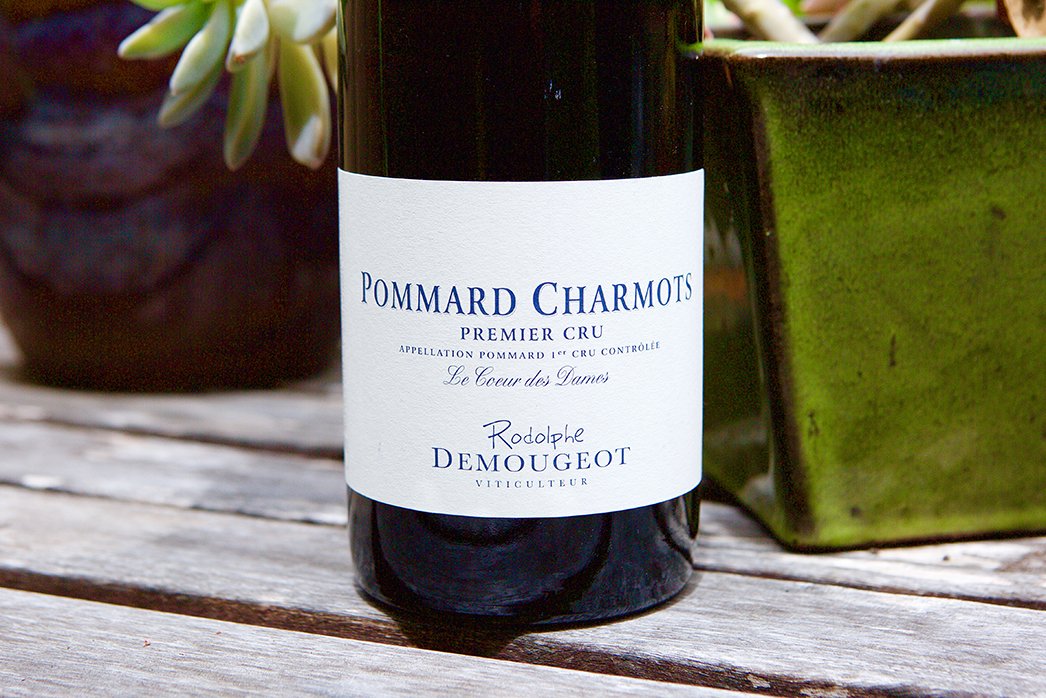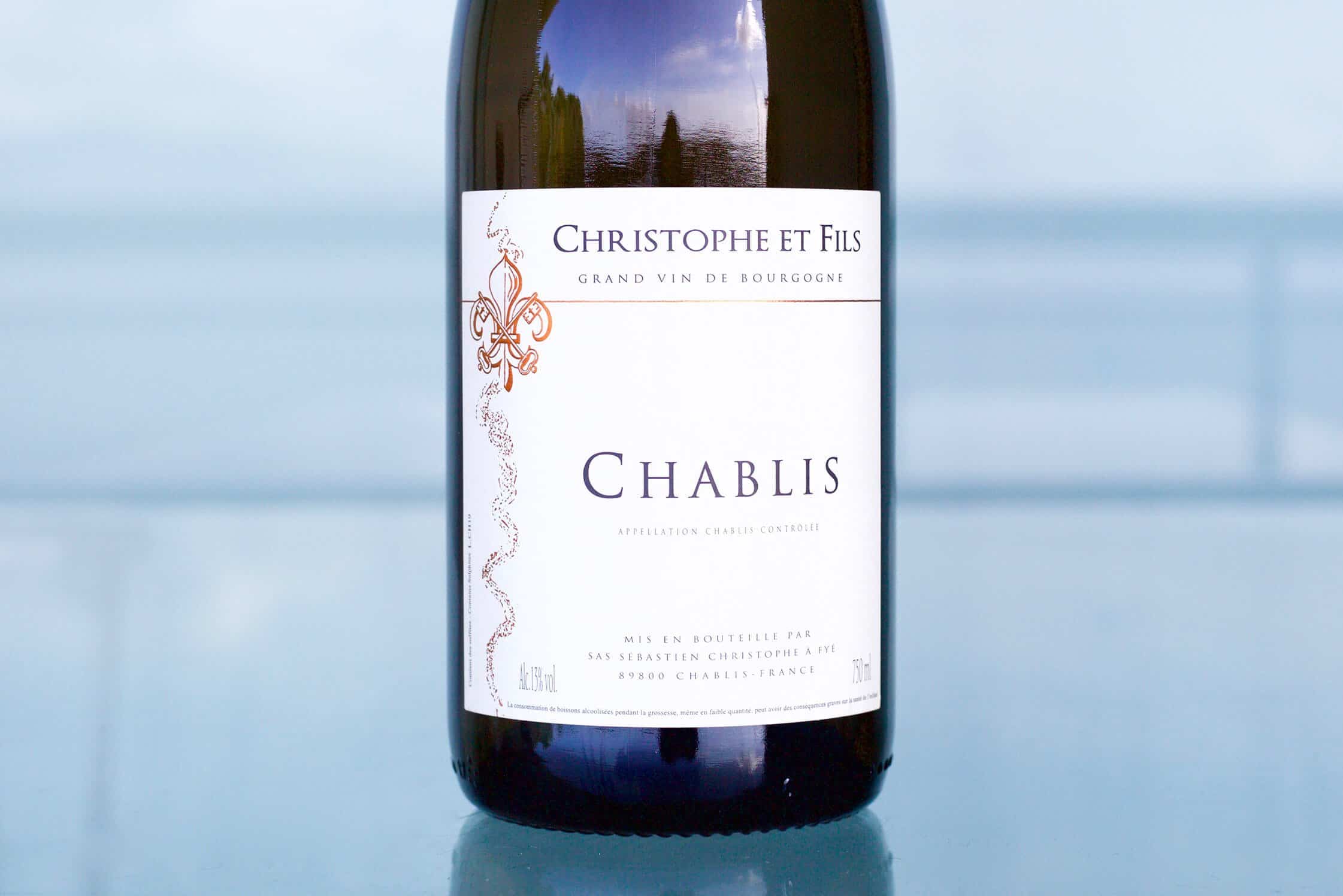
One of the most important wine business headlines for us importers happened on March 6th, with the suspension of the tariffs on wine, among other products. The day the news dropped, a steady stream of messages from our producers flooded my phone, along with all my other receptacles of communication—the variety of which is head-spinning these days…
The tariffs had kicked off a series of unfortunate events for many of us in the businesses of fine food and wine. While we’ve all eked out some wins, starting with the presidential election (I’ll be happy not to get more grief from our winegrowers about Trump!), followed by the surprisingly rapid distribution of Covid vaccines in the US—a stark contrast to what’s happening in the EU; here in Portugal they’re projecting that at this rate, people my age won’t get the vaccine until September. With the tariff suspension we can see the light, but we are far from out of the woods. Naturally, after a couple steps forward there’s inevitably a step back: right now, containers outbound from Europe are so backed up that it’s basically impossible for any wines to run a proper route in decent time. Many shipments are scheduled to take two to four times longer than they normally would—another dinghy race with a broken paddle.
Sadly, some parts of the EU are struggling even more than expected right now, especially in the bigger countries, such as Italy and France, where there’s a resurgence that as of mid-March has forced them back into lockdown. Over here in Portugal, we had a startling uptick that went down just as fast, and now we are opening up after Easter weekend, along with Spain. As has happened in many places in the States, it’s been a rollercoaster in the EU; improvements as a result of draconian rule enforcement were undone by sudden and severely relaxed enforcement over summer, fall, and into the holiday season, all of which led to the massive and unchecked return of the curve. Restaurants have been completely closed here in Portugal, except for takeout, but in the countryside it’s not quite the same experience as in a city… Next week may possibly be my first restaurant-cooked meal since I had one in early October of last year, in Bologna, Italy—not a bad place to leave off.
A strange reality for us in this extensive pandemic period is that some of the vintages allotted for the US have yet to make it over, and many may not make it at all. As an importer who tries to visit around 90% of our producers each year, these days I can feel a little lost with regard to how some of the new vintages of wines we’ve regularly tracked for more than a decade have currently evolved, from cellar aging to their current state, now that they’re in the bottle. This opportunity to know these kids while they’re young and undeveloped is a unique opportunity for perspective that gives us confidence (or not) about a wine’s future. We know that many of you share this sense of vacancy in the understanding of what’s really going on with many of the wines we’ve kept tabs on all these years—a vacuum of knowledge and experience for these latest vintages. Hopefully we can all catch up together soon and try to continue the streak of understanding our wines from one vintage to the next, and through many of the most formative years that help us with our outlook on where the wine may go based on where it’s already been.
While it may seem that living in Portugal should’ve made it easier for me to get samples from our producers and try the wines, it’s not that simple. One doesn’t really propose to have wines shipped—even from producers who are great friends—knowing there is not yet an intent to buy… The only exception I’ve been able to make is with some of our Iberian wines whose makers are relatively nearby, and just a few of our most historical friends, like Arnaud Lambert.
In California, recent developments seem promising and we hope that trend continues. However, it might come as a surprise to some that we’ve expanded our company outlook to a national platform. Toward the second half of last year, Rachel Kerswell, a beloved member of any wine community blessed with her presence, moved to New York, had a baby right as Covid started to take shape in the US, and then came back into the fold with some serious motivation to develop our national import agenda. Going national was never really part of the plan in the beginning, but Rachel asked for the shot so we could keep working together despite her move across the country, and we sure are glad we bet on her. We now work in nearly fifteen states, and our national portfolio has taken on quite a different focus compared to our California selection: it’s almost an even split between Iberia and France, with some solid Italian and Austrian wines. It really is exciting to progress in new directions, and I’m happy to report that all of our Spanish and Portuguese producers thus far (except Quinta do Ameal) are national exclusives for us.

I stayed quite busy during the pandemic with many other projects other than the daily effort of bailing water out of our company boat and plugging the holes with every finger and toe (with the help of a few deeply committed members who didn’t miss a day of work since the start of the pandemic). About six years ago, we began to work with geologist, Brenna Quigley, at the start of her now flourishing wine career. These days she’s focused on her fabulous podcast, Roadside Terroir, and along with her efforts at a number of California wineries where she helps them better navigate the ground they work to optimize their potential and encourage the voice of their terroirs. So for a while we had a vacancy in the position of resident geologist.
In 2018, while fooling around inside the caldera of Basilicata’s famous extinct volcano, Monte Vulture, with the talented and scientifically astute brothers from Cantina Madonna delle Grazie, I finally had a phone call with a Spanish MSc geologist and PhD student from the University of Vigo, Ivan Rodriguez (pictured above), a guy whom I’d been stalking on the internet for a couple of months. Vigo is about a forty-five minute drive from where I live in Portugal, so the proximity was perfect. I was looking for another talented and young (I do prefer the open minds of young scientists), to help me continue to push my Sisyphean wine’s-relation-to-geology-curiosity-stone up the hill of nonstop roadblocks, curves and, sometimes, complete dead ends. I’ve not given up on trying to better understand the links between the wine and the rock, but I’ve begun to focus more on documenting information with greater accuracy so that maybe someone smarter and more talented than I am will be able to take real data and narratives that are peer-reviewed by historians, scientists and winegrowers, and make more sense of it.
We have a series of geological maps that I developed with Ivan and Andrea (my wife), that we will begin to circulate soon. We started with the lower-hanging fruit of Galicia and Northern Portugal because of its lack of more in-depth coverage on the subject (at least in English), its need for illumination on its geology and grape varieties, and because it’s now my backyard and a major focus for our company. Some of the maps will have essays that go into greater depth on specific regions with mostly a technical vantage point. The maps may seem simple (by design), but they take a great deal of work to develop the finished products.
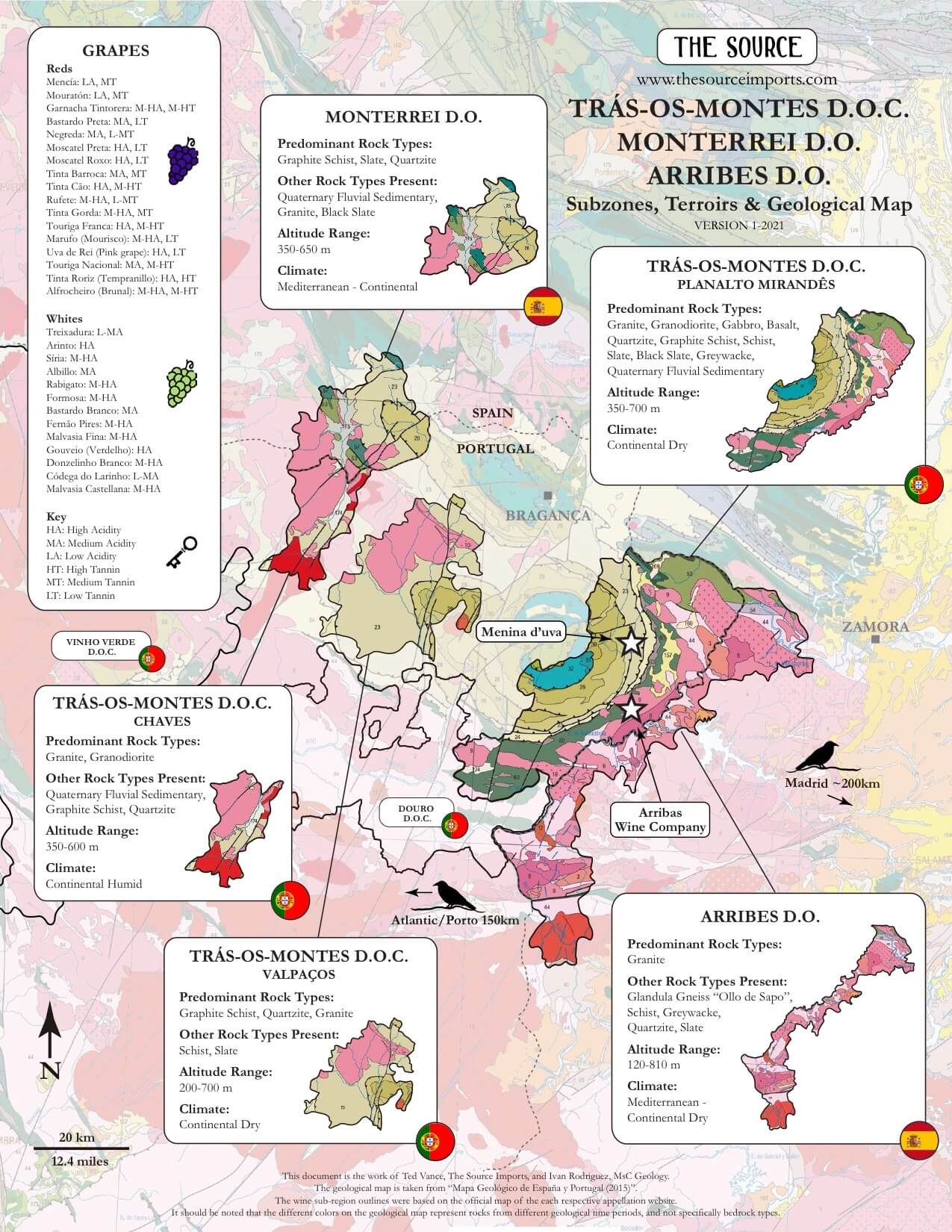
Yes! But we should’ve had a full boatload (literally) of wines arriving from Europe this month, but clearly haven’t received them due to all the massive delays. Some of the top-tier goodies include the 2017 vintage wines from Simon Bize, which I’ve tasted here, in Portugal, thanks to the Wasserman’s coordination with Chisa Bize to get some wine over to me to enjoy; it’s a truly breakthrough vintage for the Bize team with a slightly gentler disposition than the entire range had in the past few years since the passing of Patrick Bize. There’s also a big mix of vintages from Guiberteau as well as the wines of his partner-in-crime, Brendan Stater-West. There’s a lot more on order, but they probably won’t start to hit the warehouse until May.
We’re extremely happy to add a new producer from Bramaterra, in the Alto Piemonte, to our roster of Italian gems. Our collaboration with Andrea Monti Perini (pictured above) has been in the works now for more than a year and a half, though we’ve obviously had a little trip-up along the way. (Most of our San Francisco and Los Angeles sales team visited this true garage-sized cantina exactly one week after landing in Milan on the Sunday the news broke about Italy’s pandemic surge!) Andrea, a one-man-show, is crafting perhaps the most understated and subtle Nebbiolo wines within his region; of course, this means that his wines could be a top contender for the most understated and elegant young Nebbiolo wines in all of Italy. The production is tiny (200-250 cases annually) and his winery project has barely hung in there after the devastating season last year when a major hailstorm left Alto Piemonte, particularly his area, just on the border of the Lessona appellation, in ruins. During our visit with many of the great cantinas of the Langhe (team visits for perspective with G. Conterno, Brovia, B. Mascarello, Burlotto, Cavallotto, and more) of the most compelling wines we tasted out of botte was Andrea’s 2019 vintage Bramaterra—simply stunning and an experience we dream about when we taste what many on our team consider the king of all Italian grapes.
Around the end of the month, we are going to get a small dose of wines from Riecine, a historic, organic Chianti Classico producer located in the highest altitude zone of Gaiole in Chianti. It’s been a little crazy with these wines because the basic Chianti Classico often seems to evaporate by the end of their first month in stock. Why, you ask? Well, because it’s simply delicious and breaks out of the common must-add-food-to-fully-enjoy Chianti Classico mold. Riecine makes a more upfront fruity style with the entry-level wine, and then there is the Riserva (which isn’t on this container, though we should have it by the fall of 2021), cut from the from old-school cloth: deep, with a broad range of red and dark fruits, foresty, fresh, savory to the bone, and almost unbeatable with backcountry, high-altitude Italian cooking—think Sean Connery in tweed hunting quarry in the Alps. But, in this first offer of 2021 we have the two most sought-after wines in the range. First is Riecine di Riecine, a mean blind-taste for industry professionals because of its regal red-hued, high-on-the-slope Vosne-Romanée nose (minus any wood presence at all because it’s aged for three years in concrete eggs)—think Audrey Hepburn in a black turtleneck with light red lipstick. The other wine, La Gioia, is the most unapologetically delicious and voluptuous red in the range and has all the trimmings that drive tasters— those who want a lot of personality, curvature and sensuality in their wines—utterly mad; it does have a bit of newer oak too, but it wears it like Sophia Loren wore red dresses in the 1950s) utterly mad. Oh, and La Gioia and Riecine di Riecine are both 2016s! Quantities are very limited, but midway through last year I asked our friends at Riecine to hold some for us so we didn’t miss this gem of a vintage while we waited for things to begin to open up again. Lucky for us, these wines are almost here.
In Portugal, we have another gem from Trás-os-Montes, Menina d’uva. The resident maker, Aline Dominguez (pictured below), a French native with Portuguese parents, found her way back to her parent’s familial countryside after years of extensive education in a multitude of universities along with experiences working wine bars in Paris and wineries in Burgundy.
Her wines are a new take for the region, just as those from the nearby Arribas Wine Company (a new producer we just introduced last month with immediate success, i.e. overnight depletion of the single pallet of wine we had for the US), that follows the line of “natural trimmings,” but with more of a finishing touch to keep them from the funk often associated with wines made in this style. Strongly textured in the palate, the aromas are lighter and brighter, with some elements of reduction at first after opening, and this is by design, in order to enable her confidence with using much less sulfur than is often used with normal still wines. With some air and patience they deliver an authentic array of characteristics from this unique corner of Iberia. Aline is a special one.
What the heck is happening in Chile and its Itata Valley?! There seems to be an explosion of interest in the area, and I’m happy to say that we got there early (thanks to my Chilean wife and our visits to her family over the years), and I think we have one of the very best in Leonardo Erazo, with his A Los Viñateros Bravos range of wines and his estate-owned vineyard wines bottled under the Leonardo Erazo label. Leo recently quit his activities working double time with his project as well as being the primary wine director for the Altos Las Hormigas project, which has a fully working program in Cahors, France, and another in Argentina’s Mendoza wine region. Leo’s Itata Valley wines were already superb, but with his full attention solely on his own project, it has truly found another level. Last year, Andrea brought home some of Leo’s wines from Chile for me to taste, which of course found their way to blind-tastings with a bunch of top winemakers in Galicia and Northern Portugal. I thought it would be interesting for them to blind taste wines (included in the mix were those of Pedro Parra’s delicious wines from Chile) grown on the same type of granitic bedrock and topsoil that many of these winemakers work on. Almost everyone guessed that these wines were Beaujolais—no surprise… Beaujolais is largely granitic too, just like many wine regions in Galicia and Portugal (same geologic era, too), and from some mineral and textural profiles they’re nearly identical. Don’t miss out on this new batch of Leo’s wines. They’re stunning, and for the price they’re unbeatable for terroir-driven wines that are superbly crafted and deliver a great amount of emotion and pleasure.
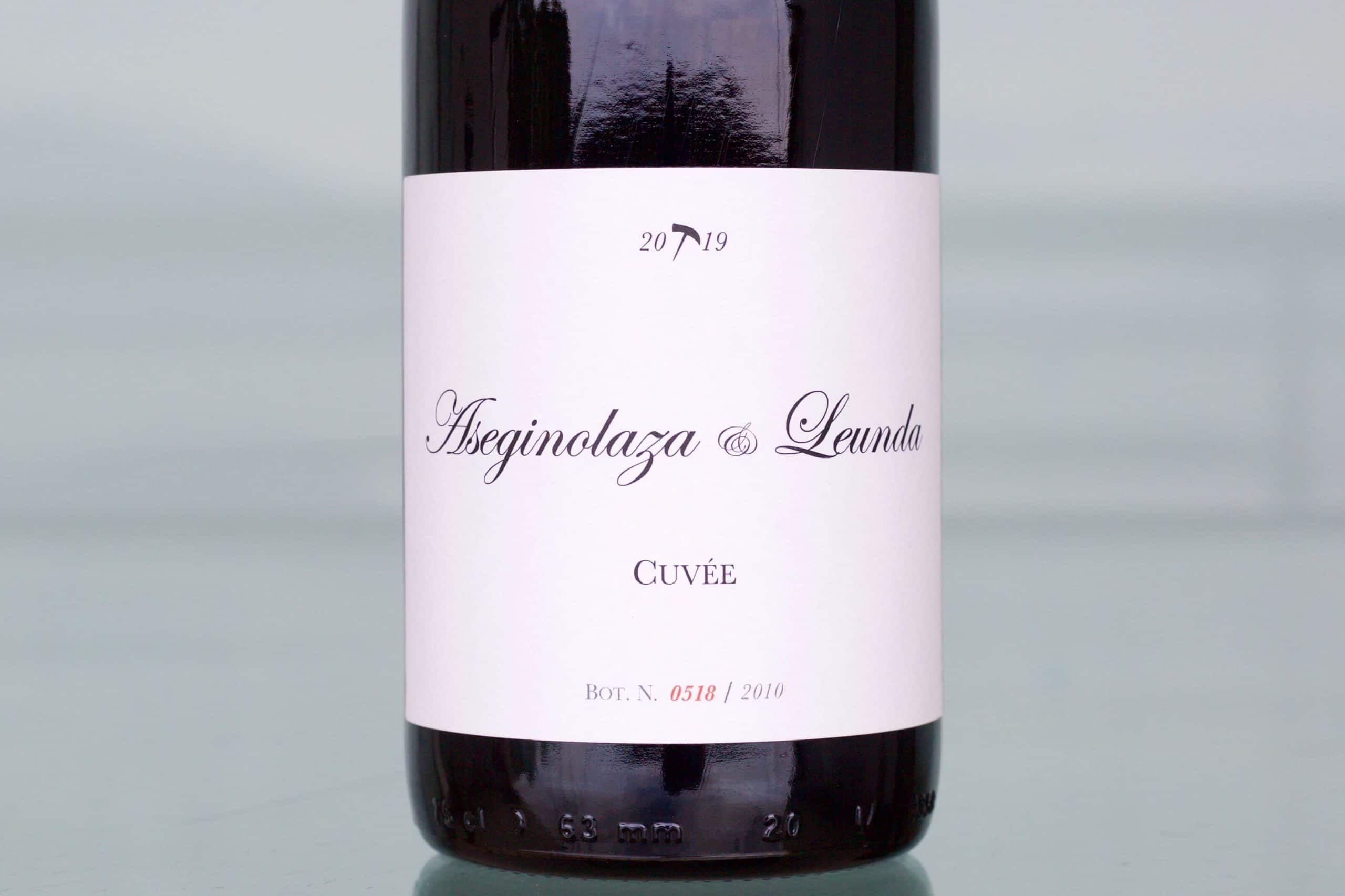
I don’t know why this is all happening so fast (well I guess I do…), but we continue to amass almost an entirely new portfolio of exciting wines. In Spain, we’ve just snagged a great winery partnership in Navarra. Yes, I’m aware of the reputation of good-but-rarely-compelling wines from Navarra, but for good reason the guys over at Aseginolaza & Leunda have captured the attention of Spain’s new generation of growers, sommeliers, critics, and wine journalists. The recognition these two environmental biologists are getting is not surprising because they masterfully capture the essence of Garnacha (and other local, indigenous varieties) reminiscent of in-balance Châteauneuf-du-Pape wines of old, with a solid Spanish flare. This is exciting and authentic stuff, and doesn’t carry CdP prices.
Others new Spanish additions mentioned in last month’s newsletter are Fazenda Prádio (Ribeira Sacra), Augalevada (Ribeiro), César Fernández Díaz (Ribero del Duero), and Bodegas Gordón (the wines of the famous Castilla y Leon steakhouse, El Capricho).
Another next-generation Portuguese project is Quinta da Carolina, taken over by the son of the family winery, Luis Candido da Silva, one of the winemakers at Dirk Niepoort’s empire. A random search online for producers from the Douro led me to send Luis a message, while he had already been advised by the guys at Arribas Wine Company to contact me—serendipity! A lunch together at my place with a salt-roasted, wild Atlantic sea bass (called branzino in Italy, robalo in these parts) was knocked out of the park with the accompaniment of Luis’ off-the-hook Portuguese white wine, with its perfectly balanced mineral drive and Richard Leroy-scented reduction (but far cleaner, refined and completely measured), along with an Arnaud Lambert-like refinement and energy. I am certain that this white wine was the most compelling unfinished (at the time, bottled at the end of March) white wine I’ve tasted in Portugal. However, the majority of the production is a range of reds that maintain that wonderfully cool, slatey mineral and metal freshness on the palate. Once Luis took over the family estate just five years ago (although he’s been working in the vineyards since he was eight), organic conversion began and all the wines started their baby steps backward in alcohol and extraction—a wise move to not upset the family with too dramatic a change so quickly, and a good long-game strategy to not have the age old tension between father and son come into play. There are wines that are experimental, but most are more in the vein of the classically-styled European wines with a lot of personality from both the terroir and its cellar and vineyard master. His wines will be a welcome balance to our Portuguese collection.
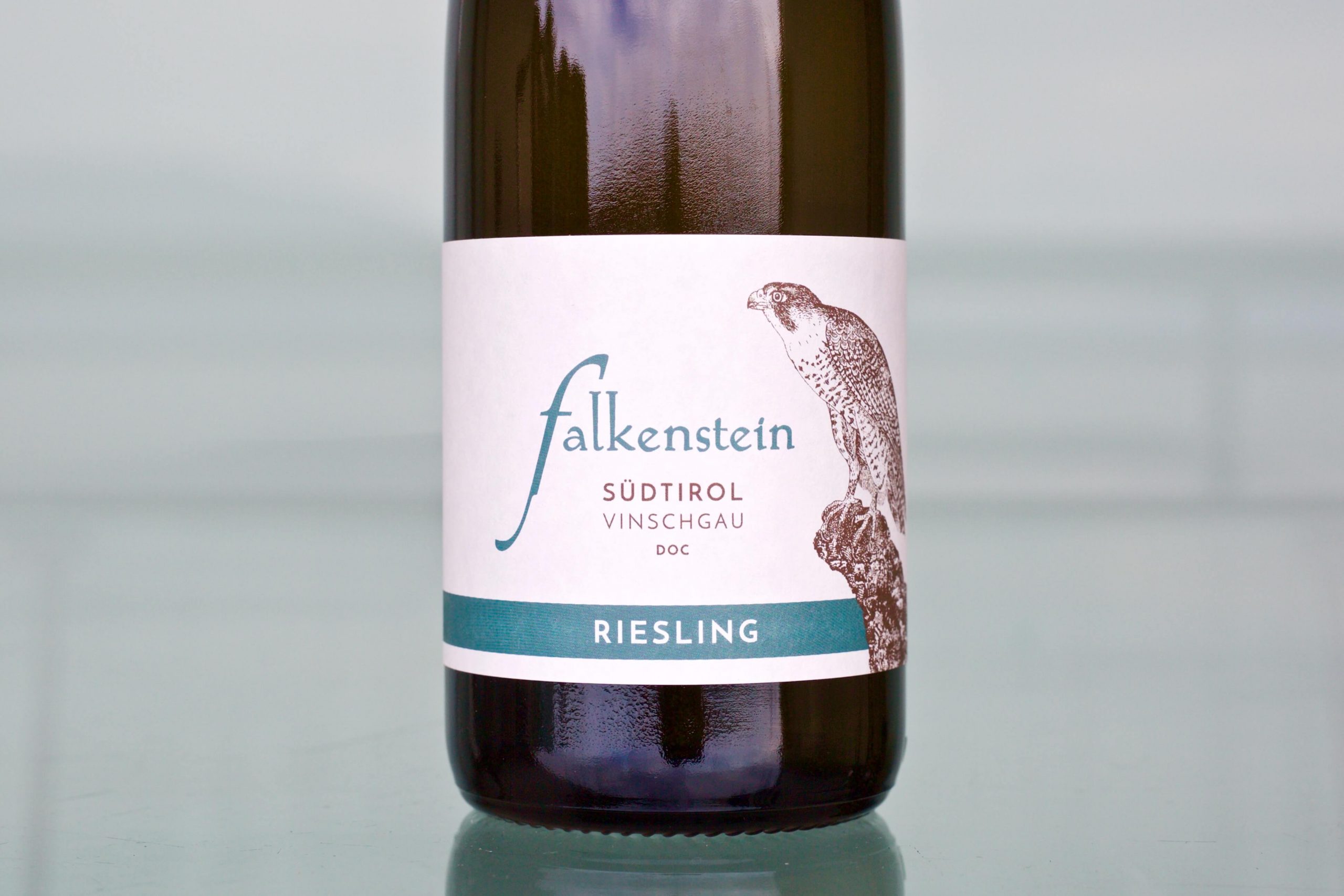
Falkenstein, perhaps Italy’s most famous Riesling producer, has been on my radar since I first tasted a Riesling about eight years ago over dinner with Matilde Poggi, from Le Fraghe winery, in northeast Italy, near Lago de Garda. Matilde is the rare producer who doesn’t just taste her own wines during a meal with her customers, but also pours other inspiring juice. I was smitten at first smell and taste; the wine bore the mark of a familiar bedrock type that immediately transported Donny (the co-owner and co-founder of The Source) and me to Austria’s Wachau. To test our theory, Matilde phoned Franz Pratzner, her good friend and Falkenstein’s visionary, to ask about the bedrock. We were right: these wines are as much Austrian in style as they are Italian in the sense that the bedrock is indeed mostly gneiss and other hard metamorphic rocks; and not surprisingly, Pratzner worked for some time in Austria’s Wachau wine region, too. Even better news is that the Pratzners have now worked organically for some years, which clearly upped their game to another level, and I’ve continued to drink the wines every time I have seen them on Italian wine lists over the years. Stylistically, think of the Wachau’s Veyder-Malberg Brandstatt Riesling for purity, mineral characteristics and freshness, with the gusto of a dry Rheingau Riesling from one of Robert Weil’s top sites. For all of us on the sales side (both wholesale and direct to consumers), Riesling indeed remains a labor of love.
That said, we’re extremely excited that we have the opportunity to represent this family’s seeming mastery of Riesling along with other great surprises in their range, like their gorgeously compelling Pinot Noir (this wine you’ve got to taste!) as well as their other whites, Pinot Blanc and Sauvignon, which are enriched with the same backbone, mineral drive and electricity as the Rieslings.
by Leigh Readey, Santa Barbara
My first introduction to Grüner Veltliner was around 2009 while I was selling wine for a different company who partnered with a small Austrian importer. In Santa Barbara, I was mostly knowledgeable about (and drinking) classic California grapes, and my tastebuds were blown away by this not-so-fruity and spicy dry wine.
With Grüner you can still have a multitude of expressions within a relatively modest price range. I’ll find myself drinking an array of wines but then realize I’m missing something. Then I remember… Grüner. And I realize that’s exactly what my palate is craving. When I found out that we were bringing in a Wachau Grüner from fifth generation winemaker Martin Mittlebach (pictured above) of Tegernseerhof that retailed for around $20, I already loved the wine without even tasting it. This wine delivers the spice in the form of Asian pear and cracked pepper, and the citrus is all things lime and lemony, lemonheads, preserved lemon, and lemon zest. The textural sensation is an experience, the acid so lively it dances around your tongue. It’s become my go-to wine, pairing extremely well with my plant-based diet. This is such a pure expression of Grüner that if it had been my first introduction to the grape, the bar would have been set very high.
by Donny Sullivan, The Source co-founder and General Manager
Anyone who is fascinated with Burgundy or has had an exceptional bottle of it will find great appreciation for this pick. It’s a true standout that stood tall in a tasting over a year ago, upon the wine’s release, and was considered by many to be the top wine of the day. I have touted the humble and quietly brilliant Rodolphe Demougeot as one of the best hidden-gem producers in the prized Côte d’Or, for years. It’s partially because he is not on the board with top cru vineyards, though his address in Meursault sits amongst some of the biggest names in Burgundy. And he’s not the kind of guy that’s gonna be tootin’ his own horn, so he stays quietly known by those who know. He’s a reserved man who lets his wines speak for themselves and although they don’t shout at full volume, they communicate with intense clarity, detail, meaning, and authenticity. The tastings I’ve had in Demougeot’s cellar remain some of my greatest experiences in Burgundy. Every time I leave the cellar I think to myself, “How could the rest of the world not already know of and covet these wines? I am so fortunate.” Although he doesn’t have a full lineup of top crus, he has this one, his best, and it’s nothing shy of one of the finest parcels of land for Pinot Noir in all of the Côtes de Beaune. Pommard, often known for more sturdy or even harder wines, Charmots is somewhat wedged into a valley crease, where access to water and limestone bedrock is more substantial and in balance with the clay topsoil. This vineyard offers, as suggested by its name, a very charming, expressive and beautiful wine contrary to Pommard’s generalized reputation. Les Coeur des Dames (The Ladies’ Heart), Demougeot’s monopole lieu-dit inside of the Charmots premier cru, is the crown jewel of the domaine and is handled with exceptional care. For many years now it has been plowed by horse and worked by hand with only a minimal intervention of organic or biodynamic treatments. The concentration and intensity in its lifted, somewhat lighter-bodied and fine-tannin structure deliver the juxtaposition we seek in great wines. The spectrum, precision, weave and evolution of aromas is intoxicating, as are the bevy of flavors on both the savory and sweet side of the palate. This wine offers a huge opportunity to food, and to the patient and contemplative taster. Sometimes the stars simply seem to align, and while Demougeot’s cellar has a sky full of constellations, this one is exceptionally easy to pick out!
By Jon Elkins, Cayucos (Central Coast) California
Sharing so many great wines from Europe with my restaurant and retail customers is always a joy. Many of them haven’t really been shown a wide selection of imports, and I love to be the bearer of enlightenment. One of my absolute favorite consultations is the one where I help the buyer choose which of the Chablis producers that I present suits their business the best. Of course I’ve made up my mind as to which direction they should take, but it’s really up to them to decide. There are more than a few things to consider, such as the cuisine; is it forward, minimal, simple but sublime? Or, is it classic, complex, rich and comforting? What’s the vibe like in the dining room? Who are the clients?
Recently I found the ideal restaurant to offer the 2018 Christophe et Fils Chablis. The wine buyer is also the chef and it is especially fun for me to present a wine the way a chef would construct a dish, breaking it down into its components and discussing how and why they work so well together, and I find this wine to be so much like a dish that I really want to eat. Sebastien Christophe creates a Chablis that is remarkable in its restraint, its subtlety, its demure elegance, and yet because these characteristics are so thought-provoking, the wine leaves a powerful impression. These same characteristics are what makes the wine such a pleasure to pair with a dish composed in the same fashion. The wine has great clarity, with just the faintest tinge of golden-green hue that shines for you as you swirl it in your glass, the color is that of freshly pressed Chardonnay that never deepened beyond that process. The aromas are all classic Chablis, at their freshest, their most lovely. That flinty wet stone. It’s there, but it’s not so overtly developed to be the first thing you notice, and all the other expected mineral components are present, including crushed oyster shells and fine sea mist, hints of chalky coastal bluffs. The texture is very much alive with that same sort of sea salt and mineral-tinged acidity that escorts the fruit across your palate. The fruit component of this wine? Well, it’s Chardonnay. It tastes like really fine, well-raised Chardonnay from brisk Chablis vineyards. It’s odd to have so much to say about a wine, but when you get to the part about all the expression of various fruit components, there just aren’t loads of comparisons to make. It is what you’d expect, a bit of that just-a-moment-away-from-ripe apple, a bit of lemon, a bit of lime. Together they form a very delicate and lithe little lemon drop candy that sits itself right in the center of your tongue. Savory components, herbs like fresh lemon thyme bring an earthy note. Then a very familiar Chablisienne bitter, almost unripe green almond component comes through on the finish. It’s quite classic, but quite modern in its interpretation. The chef was inspired and prepared a little nibble for us. A crudo of scallops with a splash of a very light and gingery ponzu, a sprinkling of pulverized lemon grass, and just a bit of Thai chili and lime zest. I thought that Christophe et Fils was probably the right choice for this restaurant. Oh yes. ■




